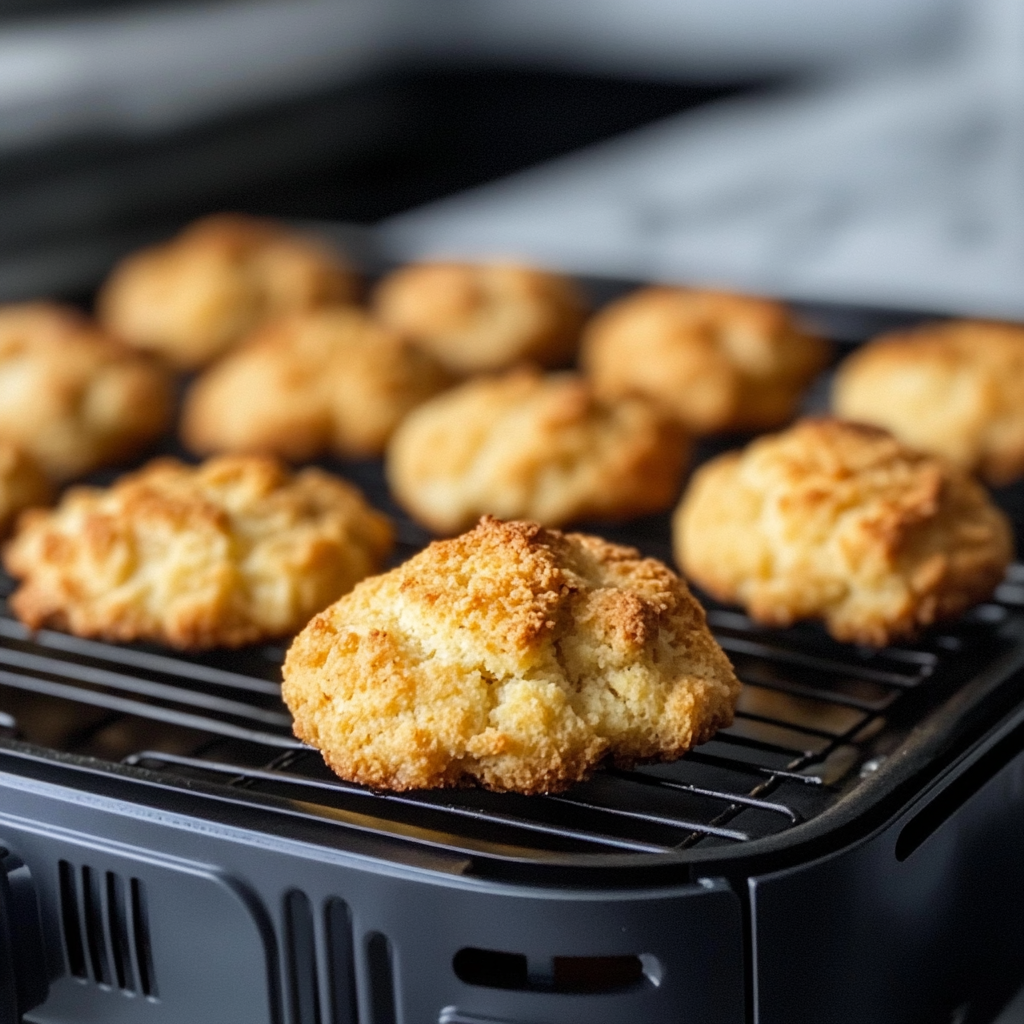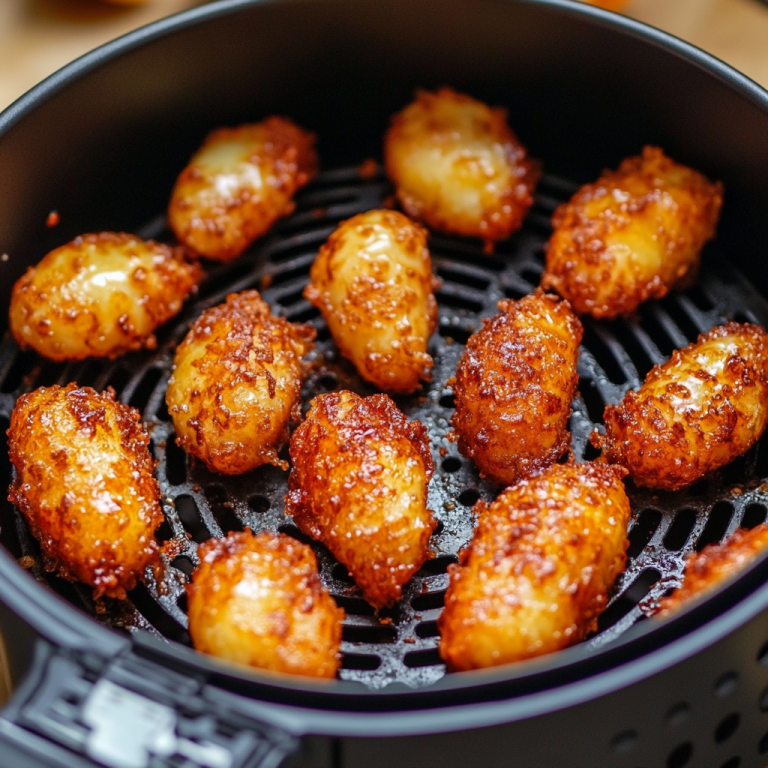Air Fryer Baking Temperature: Best Settings For Perfect Results
Air fryers have transformed cooking, offering a healthier and more efficient alternative to traditional baking methods. This guide explores what an air fryer is and the benefits it brings to your baking routine, from saving time and energy to providing healthier meal options. It also includes essential tips on understanding and adjusting air fryer temperatures for optimal results, common mistakes to avoid, and how to ensure your baked goods turn out perfectly every time. Whether you’re a seasoned baker or just starting out, this information will help you make the most of your air fryer in the kitchen.
What is an Air Fryer?
An air fryer is a highly versatile kitchen appliance that employs convection cooking technology to fry, bake, and roast food with minimal use of oil. This innovative cooking method circulates hot air to achieve a desirable crispy texture, making it an increasingly popular choice for individuals seeking healthier alternatives to traditional frying techniques. Equipped with adjustable temperature settings and user-friendly pre-set functions, air fryers have transformed meal preparation by providing energy-efficient and rapid meal solutions for busy households.
Benefits of Baking in an Air Fryer
Baking in an air fryer provides numerous advantages, including healthier cooking options and enhanced energy efficiency. Unlike traditional ovens, air fryers can significantly reduce baking time while improving food quality, making them well-suited for quick meals and meal preparation. The air circulation technology facilitates even cooking, allowing for effective flavour infusion that enhances the taste of baked goods such as muffins, pizza, and various dessert recipes.
Healthier Cooking Option
One of the most significant advantages of using an air fryer is its capacity to promote healthier cooking options, allowing individuals to enjoy crispy textures without the need for excessive oil. This method not only supports low-fat cooking but also ensures food safety and the preservation of essential nutrients, making it an appropriate choice for gluten-free baking and allergen-friendly meal preparation. Air frying employs rapid air technology, which circulates hot air around the food, resulting in even cooking and an appealing crunch without the need for submerged frying. This technique significantly reduces the formation of harmful compounds commonly associated with traditional frying methods. For individuals with dietary restrictions, this cooking style facilitates the incorporation of whole foods, such as vegetables, lean proteins, and grains, which can be easily customised to meet specific health requirements. By promoting a healthier lifestyle, air frying expands the possibilities for meal planning while ensuring that nutritional integrity is maintained.
Time and Energy Savings
Air fryers are designed to provide significant time and energy savings, enabling users to prepare meals efficiently without compromising quality. With reduced cooking times compared to traditional ovens, these kitchen appliances facilitate effortless meal preparation for busy individuals and families, making quick meals a practical option without excessive energy consumption. The remarkable efficiency of air fryers is attributed not only to their rapid cooking capabilities but also to their minimal preheating requirements often requiring just a few minutes compared to the extended warm-up times associated with conventional ovens. This reduction in waiting time enhances the cooking experience, allowing home cooks to begin meal preparation promptly and enjoy their dishes sooner. The technology employed in air fryers circulates hot air evenly around the food, ensuring thorough and efficient cooking while conserving energy and maximising flavour. By streamlining the cooking process, air fryers effectively address the demands of modern lifestyles, assisting users in saving both time and electricity with each meal prepared.
Understanding Air Fryer Temperatures
Understanding air fryer temperatures is essential for achieving optimal cooking results, as these appliances possess unique temperature settings that differ significantly from traditional ovens. The ideal baking temperature and cooking time may vary depending on the type of food being prepared, making it imperative to be familiar with temperature control. This knowledge is crucial for maximising cooking efficiency and ensuring the quality of the food.
How Air Fryer Temperatures Compare to Traditional Baking
Air fryer temperatures typically operate at higher ranges compared to traditional baking methods, resulting in reduced cooking times and improved heat distribution. The efficient air circulation within the fryer promotes even cooking, allowing meals to develop a desirable crispy texture more rapidly than in conventional ovens. This elevated temperature range, generally between 180 C and 200 C, stands in stark contrast to the more moderate settings of many traditional ovens, which often maintain temperatures around 160 C to 190 C. As a result, food prepared in an air fryer not only finishes cooking more swiftly but also achieves a distinctly crunchier and more appealing texture. For example, while a roast may require over an hour in a conventional oven, the same dish can be ready in approximately 30 minutes when cooked in an air fryer, due to its superior heat distribution. This difference not only conserves time but also enhances flavours and moisture retention, significantly transforming the cooking experience.
Choosing the Right Temperature for Baking
Selecting the appropriate temperature for baking in an air fryer is crucial for attaining optimal results across a variety of recipes. It is necessary to consider factors such as the type of food, ingredient variations, and specific baking techniques to ensure successful cooking outcomes that enhance both the texture and overall flavour of the dishes.
Factors to Consider
When selecting the appropriate temperature for baking in an air fryer, several key factors must be taken into account, including cooking time, ingredient variations, and food safety standards. Each of these elements is critical in determining the optimal temperature settings to achieve the best results. For example, different ingredients have varying moisture contents and densities, which can significantly influence cooking efficiency. Thicker items may necessitate longer baking times at lower temperatures to ensure thorough cooking without burning the exterior, whereas more delicate foods, such as pastries, may require higher temperatures for quick and even cooking. Understanding food safety standards is essential; certain meats must reach specific internal temperatures to eliminate harmful bacteria, making accurate temperature monitoring crucial. By considering all of these factors, one can enhance not only the flavour but also the safety of meals prepared in an air fryer.
Tips and Tricks for Successful Air Fryer Baking
To achieve successful baking results in an air fryer, it is essential to employ various techniques and strategies, including effective baking practices and the use of cooking charts for accurate temperature adjustments. Mastering the art of air crisping, along with implementing efficient cleaning routines, significantly enhances the overall baking experience.
Adjusting Temperatures for Different Foods
Adjusting temperatures for different foods is essential for achieving optimal cooking results in an air fryer, as various food types necessitate specific cooking times and precise temperature control. This adaptability enables the successful execution of a wide range of recipe variations. For example, cooking chicken wings may require a higher temperature to achieve a crispy skin, whereas vegetables such as broccoli may benefit from a lower setting to ensure even cooking without over-browning. Similarly, when preparing frozen items like chips or onion rings, it is important to consider the recommended temperature adjustments to prevent sogginess. The ability to accurately time and adjust these temperatures not only enhances flavours but also influences the texture of the final dish, illustrating that a thorough understanding of tailored cooking methods can significantly elevate the quality of home-cooked meals.
How to Monitor and Adjust Temperatures in an Air Fryer
Monitoring and adjusting temperatures in an air fryer is essential for ensuring that food is cooked thoroughly and safely. Employing a food thermometer can facilitate precise temperature control while adhering to established cooking guidelines for effective heat adjustment. To maximise food safety and quality, it is crucial to regularly check the internal temperature of meals, particularly proteins such as poultry and beef. This practice ensures that these items reach the recommended safe minimum temperatures, thereby helping to prevent foodborne illnesses. While the air fryer s built-in settings can simplify the cooking process, it is prudent to verify these readings with a reliable thermometer. Best practices also include preheating the device and avoiding overcrowding, which allows hot air to circulate freely for uniform cooking. By diligently monitoring these factors, the outcome will not only be safe but also flavoursome.
THERMOS FUNTAINER Water Bottle with Straw - 12 Ounce - Kids Stainless Steel Vacuum Insulated Water Bottle with Lid, Pokémon
$12.91 (as of 21:17 GMT +00:00 - More info)Common Mistakes to Avoid
Avoiding common mistakes when using an air fryer is essential for maintaining cooking efficiency and ensuring food quality. Numerous users often fall victim to improper temperature settings and a lack of understanding regarding the best baking practices, which can adversely affect the final outcome of their dishes.
Effects of Incorrect Temperatures on Baked Goods
Incorrect temperature settings can significantly impact baking recipes and the overall texture of baked goods, resulting in unsatisfactory outcomes. It is essential to understand the specific cooking times required for various culinary techniques in order to prevent these issues. For example, baking at too low a temperature may cause cakes to emerge dense and overly moist, thereby disrupting the intended light and airy texture. Conversely, excessively high temperatures can lead to unevenly baked biscuits, which may develop a hard exterior while remaining raw in the centre. Delicate pastries, such as souffl s, necessitate careful monitoring to achieve the perfect rise without collapsing. Precision in temperature control is equally important in savoury dishes; improperly roasted vegetables can either become mushy or overly charred, adversely affecting their flavour profiles and overall culinary appeal. Therefore, mastering temperature guidelines not only enhances the quality of each recipe but also contributes to a more enjoyable dining experience.










